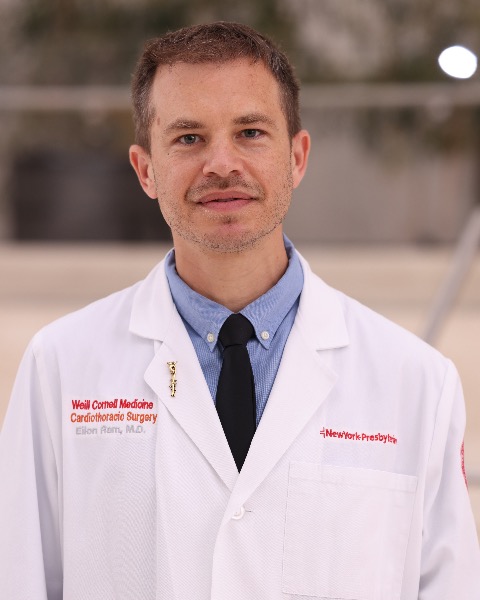Adult Cardiac
Category: Scientific Abstract: Oral/Poster
Risk of Pacemaker Implantation Following Aortic Root Replacement with and without Valve Preservation
E. Ram1, C. Lau2, B. Imielski3, A. Dimagli4, G. Jr. Jr Soletti5, M. Gaudino5, L. Girardi6
1New York Hospital-Weill Cornell Medical Center, New York, New York 2Weill Cornell Medical College, New York, New York 3Wake Forest School of Medicine, Winston Salem, North Carolina 4Weill Cornell Medicine, new york city, New York 5Weill Cornell Medicine, New York, New York 6New York Presbyterian/Weill Cornell Medical Center, New York, New York
1New York Hospital-Weill Cornell Medical Center, New York, New York 2Weill Cornell Medical College, New York, New York 3Wake Forest School of Medicine, Winston Salem, North Carolina 4Weill Cornell Medicine, new york city, New York 5Weill Cornell Medicine, New York, New York 6New York Presbyterian/Weill Cornell Medical Center, New York, New York

Eilon Ram (he/him/his)
New York Hospital-Weill Cornell Medical Center
New York, New York, United States
Presenting Author(s)
Disclosure(s):
Eilon Ram, n/a: No financial relationships to disclose
Purpose: We compared the outcomes of aortic root replacement (ARR) by composite valve grafts (CVG) and valve sparing root replacement (VSRR) operations, with an emphasis on post-operative conduction block and the need for permanent pacemaker implantation (PPM).
Methods: From 1997 to 2023, 1720 consecutive patients underwent ARR by either VSRR 501 (29%) or CVG 1219 (71%) at a high-volume aortic center. Patients were excluded if they had preoperative pacemaker, had prior history of aortic valve or root replacement, or acute aortic dissection. Preoperative, operative, and post-operative data were collected from our departmental database. All clinical and echocardiographic follow-up was carried out via our outpatient clinic. The study was approved by the Weill Medical College of Cornell University Ethics Committee (Protocol No 1607017424; January 9, 2022). The requirement for informed consent was waived because of the retrospective nature of the study.
Results: Patients undergoing CVG were older (59±14 vs. 49±14, p< 0.001), with more cardiovascular comorbidities. Patients undergoing VSRR were more female (17% vs. 13%, p=0.037) and with more connective tissue disease (22% vs. 7.2%, p< 0.001). The incidence of PPM in the entire cohort was 5.1% (N=88), and more prevalent following CVG (6.7% vs. 1.2%, p< 0.001) (Figure). Multivariable analysis demonstrated that predictors for PPM following ARR includes preoperative renal impairment [OR 3.1 (1.48-6.26), p=0.002], previous operation [OR 2.32 (1.07-4.76), p=0.026], bicuspid aortic valve [OR 3.24 (1.92-5.58), p< 0.001] and performing CVG [OR 2.52 (1.1-6.87), p=0.044]. Among the CVG population, patients who are at increased risk are especially those with some degree of aortic stenosis [OR 1.97 (1.13-3.43), p=0.017], while among the VSRR population previous atrial fibrillation increase the odds for PPM by 18 folds (p=0.005). Patients who required PPM had no additive risk for long term mortality (log-rank p=0.491), need for reoperation [HR 0.92 (0.76-1.11), p=0.403] or recurrent aortic insufficiency [HR 1.02 (0.82-1.26), p=0.853], however they were more likely to have reduced ejection fraction (30.5% vs. 16.2%, p=0.007).
Conclusion: The incidence of PPM following ARR is low, however more likely following CVG compared to VSRR. Long-term effects of PPM include reduced left ventricular function but not survival.
Identify the source of the funding for this research project: None
